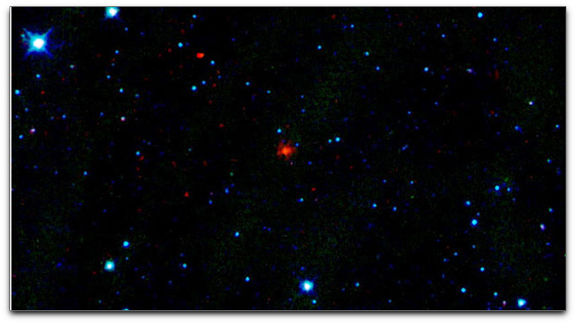
The red smudge at the center of this picture is the first comet discovered by NASA's Wide-Field Infrared Survey Explorer, or WISE. Image credit: NASA/JPL-Caltech/UCLA
The WISE telescope, which launched into a polar orbit around Earth on December 14, 2009, is expected to discover anywhere from a few to dozens of new comets, in addition to hundreds of thousands of asteroids. Comets are harder to find than asteroids because they are much more rare in the inner solar system. Whereas asteroids tour around in the "main belt" between the orbits of Mars and Jupiter, large numbers of comets orbit farther away, in the icy outer reaches of our solar system. Both asteroids and comets can fall into orbits that bring them close to Earth's path around the sun. Most of these "near-Earth objects" are asteroids but some are comets. WISE is expected to find new near-Earth comets, and this will give us a better idea of how threatening they might be to Earth.

